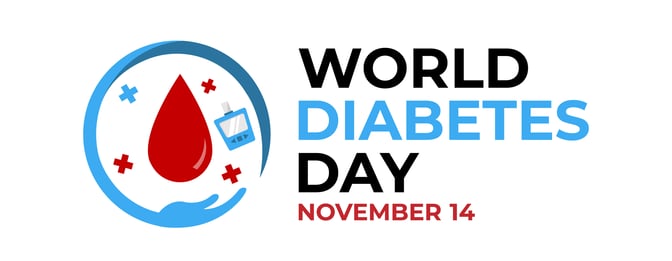UMHS 2015 grad Christine Marshall, MD, MBA, (née Fetterolf) is a family medicine physician who specializes in obesity medicine and weight management and works for Pippen Health in Pennsylvania. In honor of World Diabetes Day, we spoke to her about what future and current doctors should know about screening patients for diabetes.
 Dr. Christine Marshall is a UMHS grad & weight-management physician in Pennsylvania. Photo courtesy of Dr. Marshall.
Dr. Christine Marshall is a UMHS grad & weight-management physician in Pennsylvania. Photo courtesy of Dr. Marshall.
UMHS: When should future and young doctors screen a patient for diabetes?
Dr. Christine Marshall: The USPSTF [United States Preventive Services Task Force] recommends screening nonpregnant adults aged 35 to 70 years who [are] overweight (BMI >26) or [experiencing] obesity (BMI >30) and no symptoms of diabetes. You should also screen for diabetes sooner or at a lower BMI for patients with higher risk factors (African American, Asian American, family history).
What are common risk factors for diabetes?
The most common risk factors for diabetes are [being] overweight, obesity, [having a] family history, sedentary lifestyle, age >45, a history of prediabetes or gestational diabetes.
What are the most common treatments for diabetes?
Treatments for type 1 and type 2 diabetes are different. For type 1, they need insulin since the body doesn’t make it. For type 2, there is too much insulin and it doesn’t work well so treatment needs to focus on reducing blood glucose so insulin can work better. The most common treatments include lifestyle changes which are also prevention techniques described below. Medication such as Metformin is most common. Other medications include sulfonylureas which are falling out of favor due to higher risk of hypoglycemia. SGLT2 medications such as Invokana and Jardiance and DPPI like Januvia are still widely used. Thiazolidinediones have also fallen out of favor due to side effects. GLP1 and GLP-GIP medications are becoming very popular for their ability to reduce A1c and contribute to significant weight loss.

We see TV commercials advertising products that deal with “insulin resistance.” Is this the same thing as diabetes? As a doctor who works with weight management, should people buy diet products from TV or the Internet that claim to treat “insulin resistance” or is it best to speak to your family physician first?
I like to describe insulin resistance as the warning sign for prediabetes and diabetes. Insulin is what pushes glucose into cells for use. When cells start to become overloaded with sugar, they start to resist the effects of insulin so we see insulin levels rise in the blood to force more glucose into cells so blood glucose levels still look normal and A1c is normal (<5.7%).
Prediabetes is the next step; insulin starts losing the battle because cells are so full of sugar that blood glucose levels start to rise (A1c 5.7-6.4) but not yet at a level that we would call diabetes (A1c >6.5%). You should always check with your doctor before taking anything to treat insulin resistance as they may have interactions with other medications or increase your risk for hypoglycemia (low blood sugar).
In layman’s terms, can you explain the difference between type 1 and type 2 diabetes?
In type 1 diabetes, the pancreas does not make insulin or makes very little insulin. The blood glucose levels rise because there is no way to get it into the cells even though the cells are empty. In type 2 diabetes, insulin is over produced and the body stops responding to it. Blood glucose starts to rise because cells are so full of sugar that they are resisting attempts by insulin to get more in.
For an otherwise healthy patient in their 30s or 40s who might be slightly overweight and doesn’t have diabetes but has a family history of type 2, what advice would you give for changes in diet and lifestyle to lower the risk of preventing diabetes later in life?
A lower-carb Mediterranean diet is ideal. Diet should focus on carbs that come from fruits and veggies and some complex carbs. Sweets and processed foods should be avoided. It should also include lean protein and healthy fats. Increased activity, at least 30 mins of moderate to vigorous activity a day, three times a week is ideal. If work is sedentary, try getting up every 30-60 mins for a three-minute walk. Adequate sleep and managing stress can also help decrease cortisol in the body (cortisol can increase blood glucose).
Is there anything else you would like to say about diabetes and also controlling one’s weight, carb and sugar intake and diet overall?
The prevalence of diabetes has increased with the obesity endemic in the US and childhood obesity is also on the rise, so it is even more important for patients/families to model a healthy lifestyle for the children of the future to reduce obesity and diabetes.
Dr. Christine Marshall may be contacted via email at cfett25@gmail.com

Scott is Director of Digital Content & Alumni Communications Liaison at UMHS and editor of the UMHS Endeavour blog. When he's not writing about UMHS students, faculty, events, public health, alumni and UMHS research, he writes and edits Broadway theater reviews for a website he publishes in New York City, StageZine.com.
















